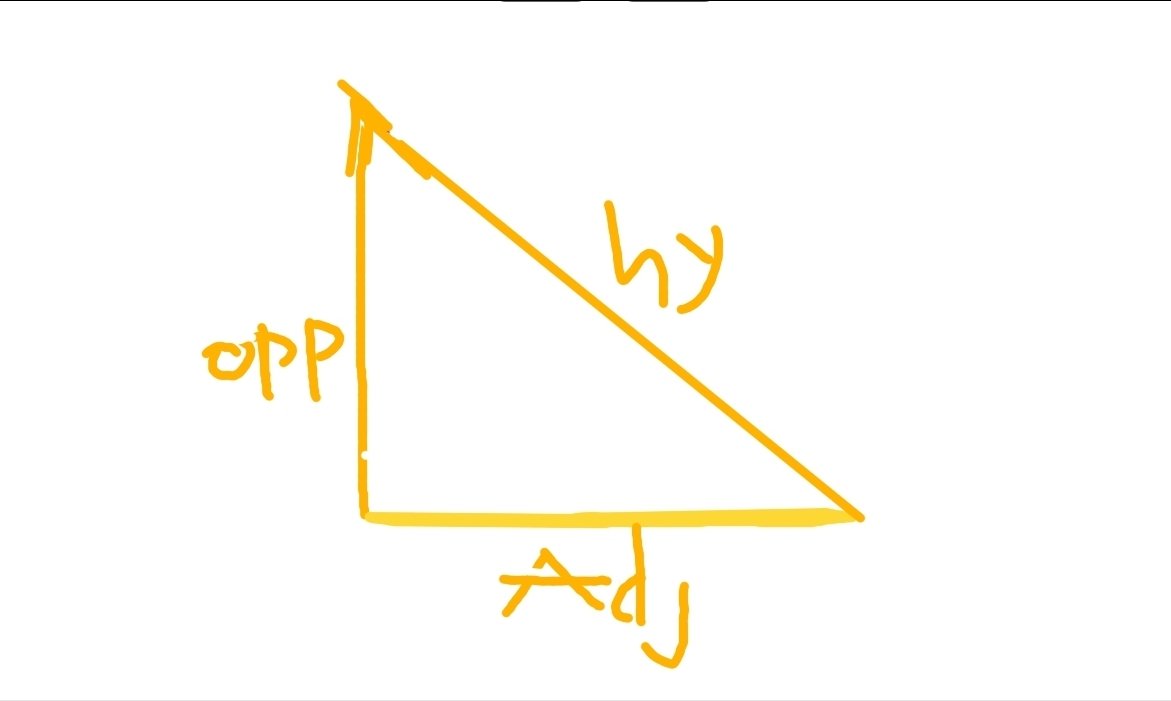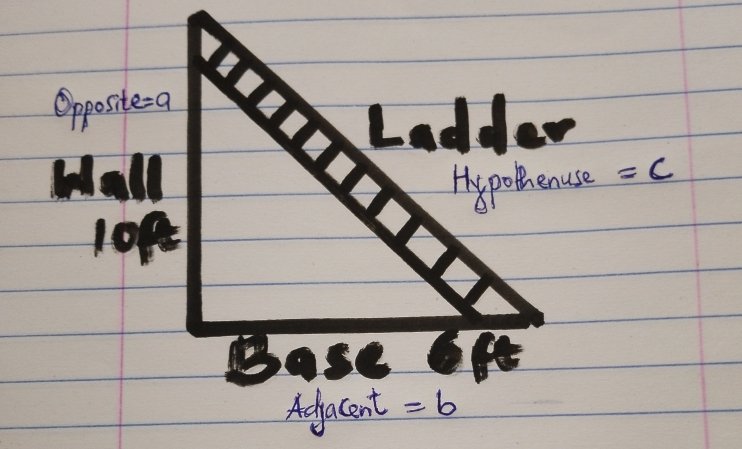Pythagoras theorem (lecture 1)
0 comments
Greetings everyone. I'm excited to make my first post in this community today. Since the community is all about teaching, and learning, I will be delving into some mathematical problem solving. This can be helpful for those grappling with basic math concept, and also for high school students. Remember, no knowledge is wasted. So let's embark on this journey together.
Exploring Pythagoras' theorem
Pythagoras, a greek mathematician and a philosopher, left behind a legacy of profound theories.
The Pythagoras theorem states that the square of the longest part of a right angle triangle (hypothenuse) is equal to the sum of the square of the other two sides
In a right-angled triangle, the hypotenuse is the longest side, while the other two sides are known as the opposite and adjacent. Let's refer to this sketch for clarity:

In the image, "hy" represents the hypotenuse, "opp" denotes the opposite side, and "adj" stands for the adjacent side.
Note that we can identify the hypothenuse in two ways.
The longest part of a right angled triangle, and
Where the right angle is facing.
An examiner might occasionally draw a right-angled triangle in a confusing manner, making it challenging to identify the hypotenuse. However, once we ascertain the direction of the right angle, we can easily spot the hypotenuse.

The right angle is denoted by the yellow colour in the image above, and we can see where the hyp is labelled.
Now, let's formulate the theorem. To maintain clarity, we'll use letters to represent each side.
Hypothenuse = c
Opposite = a
Adjacent= b
The square of hypothenuse is written as c2, also called hypothenuse square
The square of opposite as a2, known as opposite square
and the square of adjacent as b2, also known as adjacent square
Going by the Pythagoras law, we have
c2 = a2 + b2
The important aspect is identifying the three sides, and understand that the square of the hypothenuse is equal to the length of the square of the other two sides.
Let's work through an example
Problem : @legwork lean a ladder against a wall, forming a right angled triangle. If the height of the wall is 10 feet long, and the distance from the base of the ladder to the wall is 6 feet, what is the length of the ladder ?
Solution
First, we have to interpret the question.

The height of the wall is 10 feet. In a right angles triangle, the wall is the opposite.
The distance from the base of the ladder to the wall is 6ft, which is the adjacent, and
The ladder leaning against the wall is the hypothenuse, which the feet is unknown, so the hypotenuse is what is missing.
Let's denote
"a" as the height of the wall = 10ft
"b" as the length of the base of the ladder = 6ft
"c" as the length of the ladder 🪜= ?
So using the Pythagoras formula
c2 = a2 + b2
Since we already know that a = 10ft, b = 6ft, and c = ?
Let's substitute the values
c2 = 102 + 62
102 means 10 x 10, and
62 means 6 x 6. So we have c2 = (10 x 10) + (6 x 6) c2 = 100 + 4 c2 = 136 Take the square of both sides. In other to isolate the variable we are looking for, which is "c", we have to raise both sides to the power of 2, and by doing so, the square on "c" is counceled out leaving us with only "c", and we give 136 a root. Therefore, c = √136 The square root of 136 is 11.66 using a calculator. Approximately = 12. So the length of the ladder 🪜 = 12 feet Thanks for sticking around. This is Lecture 1 on the Pythagorean Theorem. In Lecture 2, we'll delve into finding the opposite and adjacent sides. Feel free to comment if you find the steps helpful, and I'm open to any questions or corrections you may have. Striving is key to achieving our goals and making a difference. When we keep pushing forward, and learning, we would keep growing day by day! Thanks to steemit markdown posts. Very helpful.
All images are mine. Jah bless.
Comments